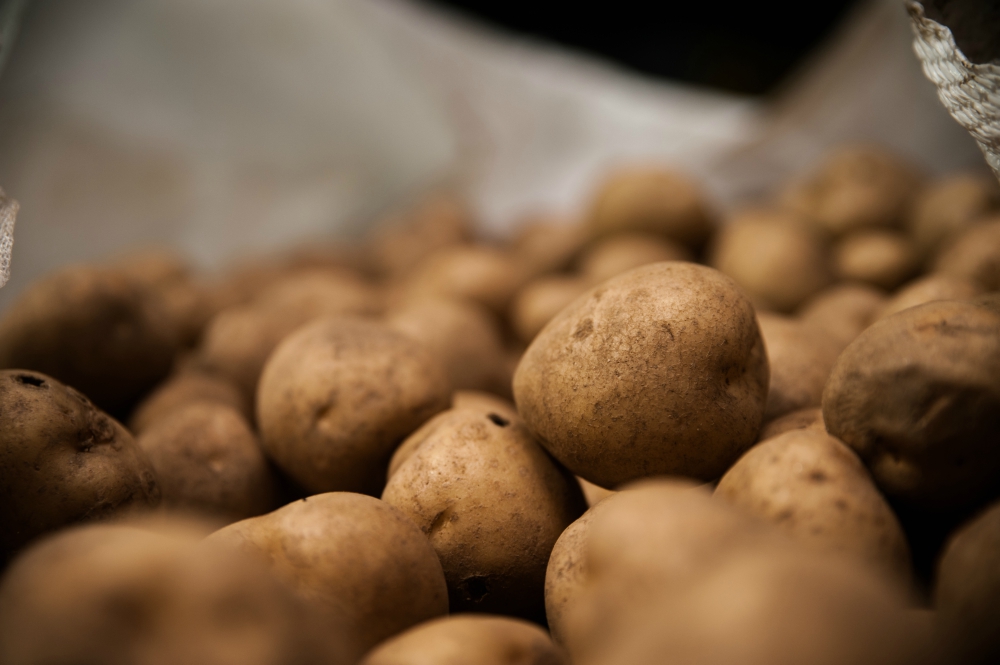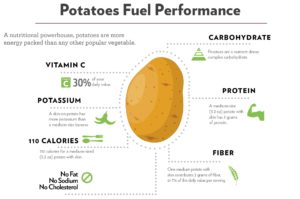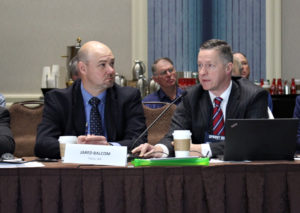
State of the Potato Industry Report 2020
The U.S. potato industry has been in a fight in recent decades, a fight against negative public perception.
International demand for potatoes and potato products continues to increase, particularly in Asia, and U.S. demand for processed potatoes is increasing. However, the average yearly consumption of potatoes among Americans overall trended downward throughout the 2010s.
Potatoes are vegetables and they are packed with vitamins and minerals. With today’s health-conscious consumers, particularly among the younger generations, the potato industry is using the healthy benefits of spuds to combat against the notion that they are mounds of empty carbs.
In the summer of 2018, Potatoes USA launched a marketing campaign that targeted the athletic community, which sets trends that other health-focused people tend to follow. The “What Are You Eating?” campaign is geared toward reaching athletes with the message that vitamin-and-mineral-packed potatoes are ideal for maintaining optimal athletic performance.
Potatoes USA CEO Blair Richardson said the first full year of the campaign exceeded expectations.
 “We’ve partnered with a number of different organizations directly, like the Rock ‘n’ Roll Marathon, but also associations that represent dieticians and nutritionists. They’ve allowed us to talk about potatoes at their different conferences and such, so we’re making significant in-roads with those groups as well,” Richardson said. “The primary thing I see is that conversations about potatoes have started to change in the United States; they’re taking a more positive tone. Over 99% of all conversations on social media are positive or are the types of conversations we want to see. The 1% that aren’t positive are often neutral.”
“We’ve partnered with a number of different organizations directly, like the Rock ‘n’ Roll Marathon, but also associations that represent dieticians and nutritionists. They’ve allowed us to talk about potatoes at their different conferences and such, so we’re making significant in-roads with those groups as well,” Richardson said. “The primary thing I see is that conversations about potatoes have started to change in the United States; they’re taking a more positive tone. Over 99% of all conversations on social media are positive or are the types of conversations we want to see. The 1% that aren’t positive are often neutral.”
The Idaho Potato Commission (IPC) has been targeting athletic audiences with its marketing efforts for a number of years, said longtime president and CEO Frank Muir. He noted the sponsorship of the Famous Idaho Potato Bowl college football game, which he called a “four-hour infomercial promoting potatoes as healthy,” as well as national television spots during the Boston Marathon, Ironman World Championship triathlon in Hawaii and anytime Boise State University football is on national TV.
“We want to explain to consumers that potatoes are healthy and, from our perspective, Idaho potatoes are the best in the world,” Muir said. “All of our research shows we’ve made great strides on both points.”
International markets
Twelve months ago, trade turmoil was a major topic at Potato Expo. While ongoing negotiations with China remain in flux, several key issues are moving toward resolve.
A new U.S.-Japan deal was reached, which will immediately reduce and eventually remove tariffs on American frozen and dehy spuds. Japan is the No. 1 importer of U.S. potato products.
The U.S.-Mexico-Canada Trade Agreement (USMCA) cleared a major hurdle in December, when the Trump administration and House Democrats reached an agreement on an amended deal. In May, Mexico removed a 20% retaliatory tariff on frozen U.S. potatoes.
In June 2019, six Idaho shippers went to Taiwan to explore opportunities to increase sales. The island nation is home to approximately 24 million people and consistently ranks among the top 10 importers of U.S. potatoes.
“Potatoes USA has a done a job developing that market. We’ve gone from one shipper being qualified to ship there to five,” said Muir, who added that the Taiwanese are “willing to pay a premium price” for Idaho potatoes. “We have to do additional late blight testing in order to ship into Taiwan. One of the areas we’re working is to get federal grants to help with that.”
Muir noted that Idaho ships fresh potatoes to 17 countries, adding that when he started at IPC 17 years ago, that number was zero.
After overall export numbers fluctuated during the 2018-19 marketing year, the first quarter of the 2019-20 marketing year showed numbers up in all three major categories: fresh, frozen and dehy, according to Potatoes USA.
Fresh potato sales to major markets on high American shippers’ wish list — namely, Japan and Mexico — remain elusive, however. Mexico continues to restrict sales of fresh U.S. potatoes within 26 kilometers of the border.
“Mexico continues to be a target market for us. We have done very well in the 26-kilometer area,” Muir said. “This past year Calimax — the major retail chain within that area — conducted its first ever potato month in which 82 of the 93 stores participated. They saw sales increase and their shrink decrease during that time.”
In addition, National Potato Council CEO Kam Quarles has said recently that fresh potato access to Japan would generate $150 million for U.S. potato industry.
Ag labor reform
Finding enough labor is a major challenge facing U.S. growers, no matter their crops. With immigration reform being a hot-button topic at the national level in recent years, changes to the guest worker program have been hard to achieve.
“One of the most important things for farmers is that we’re getting a stable and reliable workforce,” Muir said.

On Dec. 12, Congress took a significant step toward reform when the House of Representatives voted 260-165 in favor of the Farm Workforce Modernization Act, a bipartisan bill led by California Democrat Zoe Lofgren and Republicans Mike Simpson of Idaho and Dan Newhouse of Washington. NPC leaders, including Quarles and incoming president Britt Raybould, a state representative in Idaho, expressed their support of the bill, which still needs to make it through the Senate. Prior to the House vote, Raybould penned a guest column for the Idaho State Register.
Quarles highlighted a few key aspects of the bill.
- “It freezes the H-2A wages in the first year and then limits their ability to rise annually. This provides protection for H-2A employers who have been suffering with double-digit wage growth lately as the federal government’s Department of Labor currently sets the ‘Adverse Effect Wage Rate’ mandated for H-2A.
- “It also reduces the paperwork surrounding H-2A applications and allows for employers to stagger the entry of those guest workers when the work requires it. Currently, all employees under an H-2A petition must arrive at the farm at the same time, regardless of whether the harvest (or other agricultural activity) is just starting or a peak demand. This wastes guest workers’ time and employers’ money.
- “It provides a pathway to legal status (with penalties) for the current improperly documented workforce without requiring them to leave the country. … Previous bills would have required those workers who are on the farm today to leave the U.S. and petition for re-entry. Such unwise proposals ensure a massive loss of labor and huge negative economic impact on U.S. farms and the consumers they serve. It also breaks up the families of farmworkers (some of whom include children or spouses who are U.S. citizens).”
Top photo: Alexis Fischer Photography







